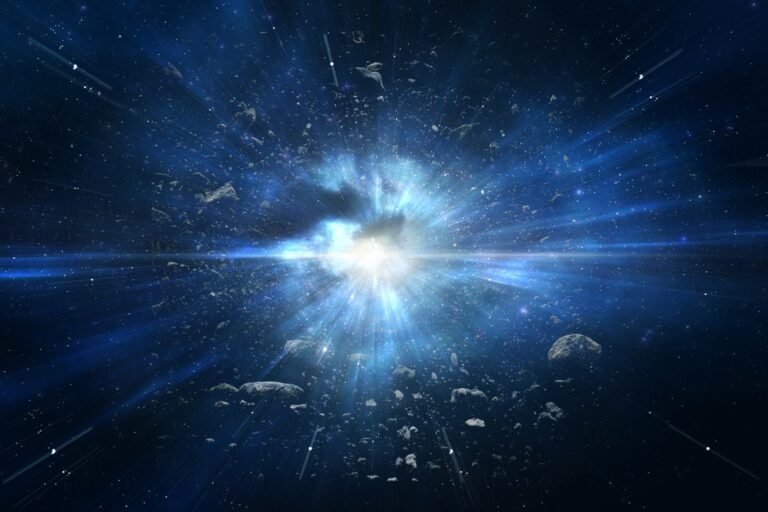Gravitational waves from the Big Bang might have generated light in the early universe.
Explosive Energy from the Big Bang May Have Created Light from Gravity Alone, Study Suggests
We also intrinsically understand that in the early universe, gravitational waves were possibly much more potent than at present. These early waves would have fluctuated vigorously; they would compound with time in great vigour. Anything that existed in the universe would have been caught in this ‘sling-shot’, resulting in a resonance which has the capacity to continually compress the matter to some dense lump. There is also the possibility of GWs affecting electromagnetic fields since they are distortions in the fabric of space and time and not limited to affecting only massive bodies. These waves remained oscillating, and as they did it was a possibility for energy in the universe to be radiated to its highest potential and create photons.
According to what we know, our world started rather far back in the past with the Big Bang, a sort of an explosion that marked the beginning of all processes and dispersed the first particles in space.
It is important to note that in a course of the time there were many changes in the universe, development of stars and planets, black holes, electromagnetic fields, and others. Yet in all this evolution, it is clear that the evidence of the first stages of the universe are still apparent.
This list of the most mysterious signals from the very beginning of the existence of the universe has one more name – ripples in spacetime, also known as gravitational waves. These are waves that propagate through the universe conveying on the consequences of gravity from the generating objects. The largest waves stem from processes such as the merging of black holes, supernovae – or the early phase of the universe’s expansion, shortly after the Big Bang.
As evidenced in a study delineated earlier here, some of the waves from that last category were capable of creating light on their own.
Resonance is related to this because a wave or a motion can be intensified as long as it gets a ‘boost’ at some particular frequency or phase. As for these gravitational waves, they went through parametric resonance — the same way you pump your legs to go higher on a swing.
The researchers claim that, during the early stages of the universe’s expansion, followed by the deceleration phase, numerous gravitational waves started interacting with each other: some waves amplified the other waves to the point where they were extraordinarily powerful.
A few of these waves may have been able to establish standing gravity waves, that is, regions where the waves seem to be frozen at a single phase, and the gravitational wave energy density is greatly focused.
In these regions of high gravitational intensity the authors reported that gravitational energy might have been able to excite any electromagnetic field existing around it and make the field emit light without the aid of energy from sources other than gravity. But for gravity: no other source of energy would have been required – none at all.
Certainly, we need more studies to be done to observe this phenomenon in the contemporary world, but we won’t be able to do so. That is, the gravitational waves needed to “switch on” an electric field are much stronger than the present detectable levels. Otherwise, gravity-induced light, presumably, already ceased to exist in the world, unless another Big Bang happens.
However, the idea is still appealing. The study of the formation of our universe is quite limited due to the fact that the initial stages of its evolution cannot be easily investigated, therefore, any information on how it might have been observed is quite helpful.
Every piece of information helps us in the understanding of the cosmos in which we dwell.
Do not forget to share your opinion with us to provide you with the best posts !




0 Comments